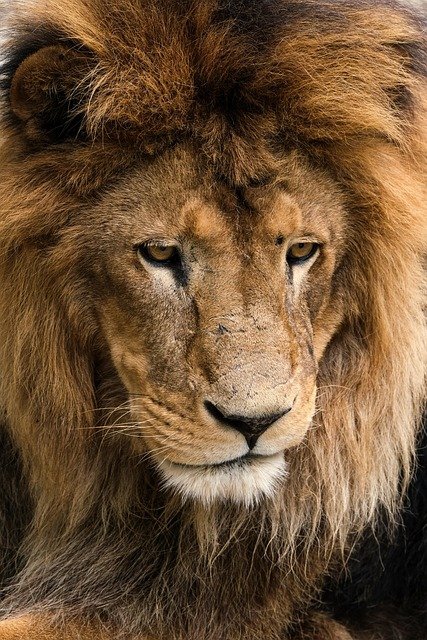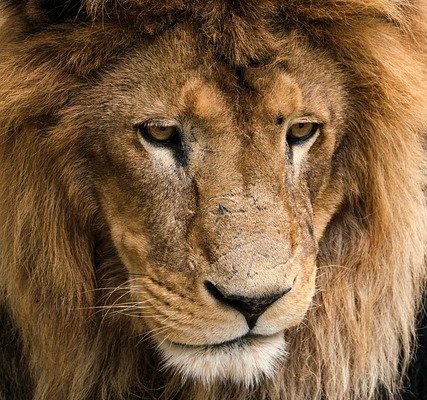
Think of a lion as the celebrity of the animal kingdom. They’re cool, right? But just like with any celebrity, there’s a lot of misinformation floating around. So, if you’ve ever found yourself pondering the truth about lions, you’re in the right place. Let’s dive into some common myths and clear up the confusion, one roar at a time.
Lions Are Just Big Cats
You might be thinking, “A lion is basically a big version of my house cat.” While they share some similarities, that’s not quite the case. Lions and domestic cats belong to the same family, Felidae, but they’re different species with unique traits.
Lions are social animals; they live in groups called prides, which can include several females, their cubs, and a few males. In contrast, most big cats, like tigers or leopards, are solitary. This social behavior influences their hunting and survival strategies significantly. For example, lionesses often hunt in teams, utilizing their numbers to take down larger prey, while a lone tiger must rely solely on itself.
Moreover, lions have some unique physical characteristics. Unlike house cats, they boast powerful muscles, a distinctive mane in males, and a size that can reach up to 500 pounds. So while your fluffy feline may be fluffy and cute, lions are in a league of their own.
Lions Live in the Jungle
Here’s a common misconception: lions live in jungles. You’ve probably seen pictures of lions lounging under a tree, and maybe that’s led you to believe they thrive in dense, humid forests. But that’s not the case!
Lions primarily inhabit grasslands, savannas, and open woodlands in Africa. They prefer environments where they can see potential prey and stay hidden while stalking them. Picture wide, open spaces with tall grass swaying in the breeze—that’s their playground!
Interestingly, the only wild lion population outside Africa is in India’s Gir Forest, which is more of a dry forest than a jungle. So if you picture a lion lounging under thick foliage, it’s more likely they’re sunbathing in the open than hiding in the deep jungle.
Male Lions Do All the Hunting
You might have heard that male lions are the fierce hunters of the pride, while the females sit back and relax. Honestly, let me explain that misconception.
While male lions do participate in hunting, especially when it comes to taking down larger prey like buffalo or giraffes, the majority of the hunting is actually done by the females. Lionesses are agile hunters and work together in groups to track and ambush prey. Imagine a well-oiled team working in sync; that’s how lionesses operate.
The males’ role is significant in terms of protection. They guard the pride and their territory against rival males. This means that while they may look like they’re lounging all day, they have a crucial job to do. So, when you see that majestic male lion, remember, he’s not just a pretty face; he’s also a protector.
Lions Roar At Night to Hunt
Many people believe lions roar at night to signal their presence and locate prey. You might think it’s some kind of nocturnal hunting strategy. But here’s the thing: lions actually roar for different reasons.
Roaring serves mainly to communicate with other lions, marking territory and letting rival prides know they’re nearby. Picture it as a loud announcement, “Hey, this is our space!” It helps maintain social bonds within the pride and sends a clear message to intruders.
Interestingly, lions are crepuscular, meaning they’re most active during dawn and dusk. So, while you might hear a lion’s deep roar echoing through the night, it’s not a hunting call; it’s more about ensuring everyone in the pride knows where they stand.
Lions Are Endangered Due to Hunting Alone
When it comes to lions, we often hear that their populations are dwindling because of hunting and poaching. While that’s part of the story, it’s not the whole picture.
Lions face multiple threats that contribute to their decline. Habitat loss due to human encroachment is a big factor. As farmland expands into the savanna, lions lose their natural territory and prey. This not only disrupts their hunting but also leads to more human-lion conflicts, often resulting in lions being killed to protect livestock.
Additionally, diseases, climate change, and the loss of prey due to overhunting also play roles in their declining numbers. So, while hunting is certainly an issue, it’s essential to look at the bigger picture and consider how human activities are reshaping the world lions live in.
All Lions Are the Same
Finally, you might think there’s just one type of lion roaming the earth, but that’s not true. In fact, there are two main subspecies: the African lion and the Asiatic lion.
African lions are the ones you usually see in documentaries, with their large pride structures and flowing manes. They roam across various parts of Africa. On the other hand, Asiatic lions, which are found only in India’s Gir Forest, are smaller and have less dense manes. They also lead a slightly different social structure and tend to live in smaller groups compared to their African counterparts.
This distinction is vital for conservation efforts. Different subspecies face unique challenges based on their habitats and social structures. Understanding these differences helps in creating targeted efforts to protect them.
Lions are incredible creatures with a complex social structure and fascinating behaviors. They may evoke a sense of awe, but it’s crucial to separate fact from fiction when it comes to understanding them. Many myths—like their habitats, hunting habits, and conservation status—can lead to misunderstandings about these majestic animals.
By debunking these misconceptions, we not only gain a clearer picture of lions but also foster a greater appreciation for their role in ecosystems. As we continue to share stories and knowledge about lions, let’s make sure we’re spreading the truth. After all, understanding the reality of these incredible animals is the first step in ensuring their future.

